Calls for the land reform and rewilding movements to explore "common ground"
Community Land Scotland and the Scottish Rewilding Alliance have issued a joint call for the land reform and rewilding movements to work together, to help Scotland become a world leader in restoring land and seas to health, where empowered communities and nature thrive together.

Scotland has a rich history of understanding how deeply people, the land, nature, and culture are intertwined. In Gaelic, this understanding is captured in a word: Dúthchas. Dúthchas also speaks to respect and responsibility. Of people who can have a real say in their future, and who consider the interests of future generations.
But has our nation lost its way here? Perhaps. Today Scotland is one of the most nature-depleted countries in the world. And it has one of the world’s most concentrated land ownership patterns, with some 400 people controlling half of its privately owned land. These issues are entwined, and there is an urgency to address both.
With many once-rich habitats wrecked and one-in-nine species facing extinction, and with the control of so much land vested in so few hands, business as usual is not an option in the face of the nature and climate emergencies.
Yet meanwhile, growing numbers of communities are re-embracing those deep-rooted bonds encapsulated by Dúthchas.
And rewilding – large-scale nature restoration – has been surging, with the most exciting and successful initiatives empowering, inspiring and supporting individuals and communities, just as much as they restore nature and address climate breakdown.
Communities are restoring habitats, from native woodlands to peatland to rivers. They are saving wildlife, creating sustainable jobs, and forging nature-based solutions to tackle increased floods, heatwaves and crop failures in a warming world.
With this growing groundswell of hope, there is a growing imperative for Scotland’s land reform and rewilding movements to explore their extensive common ground, and coalesce around upscaled action to achieve shared goals of thriving and empowered communities, healthy ecosystems, and climate action.
That common ground includes an understanding that nature is our life support system, and that people and land are vital national assets. That community-led nature restoration isessential, and should be supported and increased – ideally on land communities themselves own or manage.
It includes an understanding that rewilding should support nature and people together. Rewilding should enrich lives, and is most successful and resilient when community-led or when there meaningful and significant community involvement from the start – ensuring communities have more of a say and stake in their environmental future, with benefits including health and wellbeing, nature-based jobs and re-peopling.
In the Highlands, for example, re-peopling and job creation are central to Trees for Life’s Dundreggan Rewilding Centre, and to the charity’s work with others in the community and with Rewilding Europe in the Affric Highlands landscape.
With just 3% of its rural land community owned, Scotland also needs to shift the dial to enable more community buyouts. Through our own direct and separate involvement with two major examples – Isle of Eigg, and Langholm Moor in Dumfries and Galloway – we have both seen first-hand how inspiring, transformative and positive such buyouts can be.
Since its buyout in 1997, Eigg – managed on behalf of the community by the Isle of Eigg Heritage Trust – has become acclaimed as a model for sustainable, forward-thinking approaches, benefiting local people together with the island’s rich habitats and wildlife.
At Langholm, south Scotland’s largest community buyout – led by the Langholm Initiative charity, and completed in 2022 – has led to the creation of the 10,500-acre Tarras Valley Nature Reserve for community regeneration, nature recovery, and climate action.
Community buyouts can increase community wealth, resilience of land, and investment into local businesses. This contrasts with widespread decline of communities and nature under Scotland’s history of concentrated private land ownership and extractive economic practices.
Ultimately, that concentrated land ownership model isn’t just unfair – it’s unfit for purpose for tackling the nature and climate crises. It has contributed to biodiversity loss historically, and is a barrier to the re-peopling that rural communities so badly need.
Local communities are invested in, and usually best-placed for, ensuring the places they live are ecologically diverse, and in working for the creation and local retention of community wealth. Distant landowners and shareholders are often not well-placed or attuned to ecological or social needs ‘on the ground’.
The Northwoods Rewilding Network, led by SCOTLAND: The Big Picture, is another example of communities contributing to nature restoration, with 25% of the network's land partners being community owned.
There is a place for large-scale rewilding projects which are not community-led too. This is essential for restoring 30% of nature at land and sea by 2030. Some are doing superb work for biodiversity. But they should have genuine community consent, agency, and benefits.
Importantly – while large-scale nature recovery provides the greatest impacts for biodiversity – we should turn the page on outdated, inaccurate narratives suggesting landscape-scale restoration means landscape-scale land-ownership.
Scotland’s almost unique model of huge monopoly landholdings has historically degraded our ecology, communities and rural economy. There is no impartial evidence this model delivers a wide range of public or ecological benefits. Instead, we need collaboration and shared understanding, recognising that more people connected to the land means better outcomes for people and nature.
Meanwhile, nature restoration in smaller and urban settings is important too, and brings nature-rich connectivity to landscapes.
Our movements also share concerns over soaring rural land prices, with estates and hill farms purchased by wealthy corporations, as an investment or for commercial forestry. A few corporations, pursuing carbon credits or subsidies and grants, have sought to associate themselves with rewilding, even though activities such as planting the wrong trees in the wrong places are categorically not rewilding, and are sometimes greenwashing.
This threatens social justice and actual rewilding alike. It risks more inequality and concentrated rural land ownership, with communities, younger farmers, local businesses, and charities priced out.
Going forwards, we need transformational, fundamental shifts in land use and ownership, with communities involved at the heart of decisions about land use change. Our political leaders need to be bold and ambitious.
Forthcoming legislation – including the Land Reform Act, Agriculture and Rural Communities Act, and Community Wealth Building Act – provides opportunities for joined-up thinking to benefit nature, climate and food security, and ensure equity for local communities.
So, can we re-embrace Dúthchas as we rewild and repeople? To revitalise and regenerate our communities? To help Scotland be a world leader in restoring land and seas to health – a more just, greener country where empowered communities and nature thrive together?
We believe we can. The land reform and rewilding movements need to work together closely, with mutual understanding and respect. Engaging with Dúthchas now – embedding rewilding and land reform in legislation, strengthening the social capital of our communities, and working across sectors through diversified land-ownership – will be a gift to ourselves and future generations.
ENDS
Ailsa Raeburn is Chairperson of Community Land Scotland, and Chair of the Isle of Eigg Heritage Trust.
Kevin Cumming is a member of the Scottish Rewilding Alliance steering group, Rewilding Director of Rewilding Britain, and Vice Chair of the Langholm Initiative.
This article was first published in The National on 25 February 2024.

